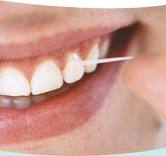

There are two types of periodontal diseases: gingivitis and periodontitis. Both are caused by bacterial infections of the gums and are generally the result of poor oral hygiene. But there are several types of treatments for gum diseases, including antibiotics, professional cleaning procedures, and alternative medicine remedies.
-
Types
-
Gingivitis is the mildest form of periodontal disease and usually manifests itself in the form of swollen, bleeding gums, though bad breath, or halitosis, may also occur.
If gingivitis has gone untreated it can lead to aggressive, chronic or necrotizing periodontitis, or periodontitis caused by systemic disease.
Oral Hygiene
-
Treating gingivitis is as easy as improving oral hygiene. Flossing daily greatly reduces the amount of bacteria and plaque beneath the gum line. If you develop gingivitis and have already been brushing twice a day, brushing more frequently will reduce the amount of bacteria in the mouth. Mouth rinses can also reduce the bacteria that cause gingivitis.
Professional Cleanings
-
Besides regular dental cleanings twice a year, there are more intensive cleaning procedures that can be performed by dentists or periodontists. Scaling is a procedure that removes tartar from above and below the gum line, and root planing removes spots of plaque or bacterial collections from the roots of the teeth.
Antibiotics
-
Whether used alone or coupled with planing or scaling, it is not uncommon to treat gum disease with antibiotics.
Topical antibiotics are preferred because they have fewer side effects than oral antibiotics and can be in the form of gel, tiny capsules, a chip or strips. They can be applied onto the gums or under them. The most common topical antibiotics are doxycycline, minocycline and metronidazole.
Common oral antibiotics include tetracycline hydrochloride, macrolide and quinolone, as well as doxycycline, minocycline and metronidazole.
Surgery
-
If gum disease is severe enough or is unresponsive to other treatments surgery may be necessary, with two of the most common procedures being flap surgery and bone or tissue grafting.
Flap surgery involves pulling back the gums and removing tartar and any other debris from the lower tooth and root. The gums are then stitched back in place so they are firmly against the teeth again.
Bone and tissue grafts replace destroyed gums and connective or bone tissue. New tissue growth will occur to connect the grafted tissue to the structures that were already present, encouraging a healthy, strong foundation for the teeth and gums that were harmed by gum disease.
-
